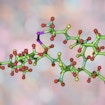
So Hyun Kim, Catherine Lord and colleagues developed a new telehealth approach to autism assessment — the Brief Observation of Symptoms of Autism (BOSA) — for use during COVID-19 and beyond.
Highlights of SFARI-funded papers, selected by the SFARI science team.

So Hyun Kim, Catherine Lord and colleagues developed a new telehealth approach to autism assessment — the Brief Observation of Symptoms of Autism (BOSA) — for use during COVID-19 and beyond.

Daniel Geschwind and colleagues showed that Cntnap2 knockout mice exhibit alterations in brain-wide connectivity related to social behaviors and that oxytocin within the nucleus accumbens regulates changes in connectivity.
Helen Bateup and colleagues showed that a loss of Tsc1 from striatal direct pathway neurons altered synaptic function and enhanced motor routine learning in mice. These findings suggest that changes in select types of striatal neurons may underlie altered motor behaviors in individuals with tuberous sclerosis complex and autism.
Yufeng Cheng, Wendy Chung, Chang “April” Shu and their colleagues used machine-learning models to develop a method for large-scale studies to estimate cognitive ability in individuals with autism for whom formal IQ tests are not available.

Ian Lipkin, Mady Hornig and colleagues showed that levels of immune molecules in mothers during pregnancy and in cord blood at birth are highly predictive of later autism diagnoses.

Laura Andreae, M. Albert Basson and collaborators showed that Chd8 haploinsufficiency in mice was linked to changes in excitation/inhibition balance and disrupted homeostatic plasticity of prefrontal circuits.
SFARI Investigator Susanne Schmid and colleagues showed that loss of Cntnap2 in rats leads to immature-like delays in auditory cortex sound processing and overactive auditory neurons.
Ivan Iossifov, Michael Wigler and colleagues provided a detailed comparison of simplex and multiplex families with autism, supporting the view that de novo mutations are a more frequent cause of autism in low- than in high-risk families.